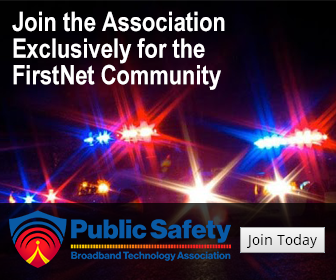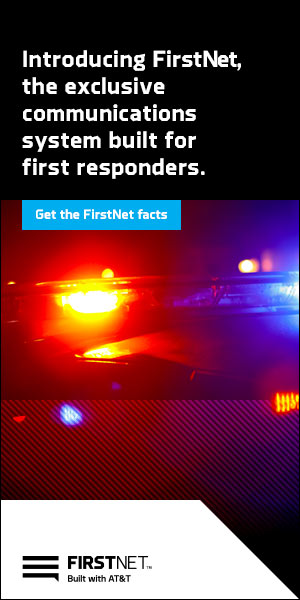by AllThingsECC.com | Dec 9, 2021 | Articles, Comm Center News
As you saw, last week we published the Public Safety Spectrum Alliance’s (PSSA) comments on the Federal Communications Commission’s (FCC) Eighth Notice of Proposed Rulemaking (NPRM). The PSSA was not alone, a number of other comments were filed as well. Next come reply comments, which are due at the FCC before Christmas (the closing date is right after Christmas).
A number of these submitted comments are worth reviewing and perhaps filing reply comments. For example, radio astronomers are concerned about what will happen if the 4.9-GHz public-safety band is taken away and given to the states. Radio astronomers have reason to be concerned since they use the spectrum just above the public-safety 4.9-GHz band. I think they would feel better if the FCC would agree that the public-safety spectrum should be licensed on a nationwide basis with a band manager. The band manager would work closely with the radio astronomers to ensure there would be no interference in either direction on a nationwide basis. Without this manager, radio astronomers would potentially have to deal with a large number of individual license holders across the United States…
by AllThingsECC.com | Dec 3, 2021 | Articles, Comm Center News
By Bruce Fitzgerald, First Responder Network Authority Senior Public Safety Advisory
When hurricanes strike, many communities become vulnerable to high winds and widespread flooding that can cause injury and damage infrastructure. Communities in a storm’s path are often without power, food, or water for days – and for first responders, the main and immediate focus after a hurricane is rescuing and responding to those in need of aid. Last season, public safety officials relied on new technologies to communicate and monitor hurricane activity. During – and in the aftermath of – these storms, FirstNet sustained and restored emergency communications for many hard-hit communities.
FirstNet was built with innovative solutions that help first responders prepare for emergencies. The network’s Band 14 priority and preemption features give public safety access to reliable, interoperable communication service when they need it most – including hurricane season.
READ FULL ARTICLE
by AllThingsECC.com | Dec 2, 2021 | Articles, Comm Center News
The Federal Communications Commission (FCC) has approved the Public Safety Spectrum Alliance’s (PSSA) stay request for the previous FCC’s plan to take back the 50 MHz of 4.9-GHz spectrum it had granted to public safety in 2002. Claiming it is under-utilized, the FCC planned to hand this spectrum over to each state. The idea was that each state would award a master lease for the spectrum to a third party, which would then determine what the spectrum would be used for in that state.
Most recently, the FCC issued the Eighth Notice of Proposed Rulemaking (NPRM) for the 4.9-GHz spectrum (Notice of Proposed Rulemaking, WP Docket 07-100). This NPRM contains language which, if accepted by the commissioners, would return the spectrum to the public-safety community…
by AllThingsECC.com | Dec 2, 2021 | Articles, Comm Center News
By Kim Coleman Madsen, Senior Public Safety Advisor, First Responder Network Authority
The Boulder FirstNet Lab is a state-of-the-art laboratory in which the First Responder Network Authority (FirstNet Authority) tests public safety functionality and features unique to the FirstNet network. Experts in the lab in Boulder, Colorado, have the capabilities to carry out network validation and testing of features such as priority, preemption, quality of service, and public safety-specific applications. READ FULL ARTICLE
by ECC Editor | Nov 25, 2021 | Articles, Comm Center News
T-Mobile (TMUS) – Get T-Mobile US, Inc. Report agreed to pay $19.5 million to settle a Federal Communications Commission complaint over a 12-hour nationwide outage that resulted in thousands of failed 911 calls.
The company must also put a compliance plan in place that contains new commitments by T-Mobile to improve the 911 outage notices given to call centers, or public safety answering points, the FCC said in a consent decree.
This includes providing call centers with information about the outages and follow-up notices within two hours of the initial outage notifications… READ MORE

by AllThingsECC.com | Nov 24, 2021 | Articles, Comm Center News
Emergency call centers across the nation are “doing a good job” upgrading to modern technology compatible with next-generation 911, but the core infrastructure backing those systems needs a boost, according to a recent analysis from the public-safety consulting firm Mission Critical Partners.
The company, which offers its customers vulnerability assessments as part of its general service offerings, last week released a qualitative analysis after completing more than 100 such assessments over the past two years. Analysts said that while agencies are implementing strategic plans that keep their systems up-to-date — such as call-handling and computer-aided dispatch platforms — the emergency services IP networks, commonly known as ESInets, and next-generation core services aren’t being upgraded as quickly…




